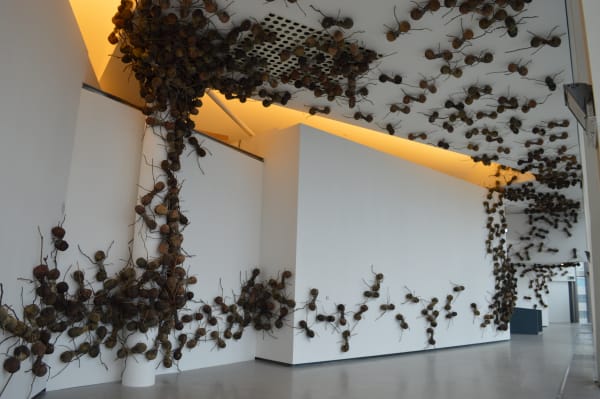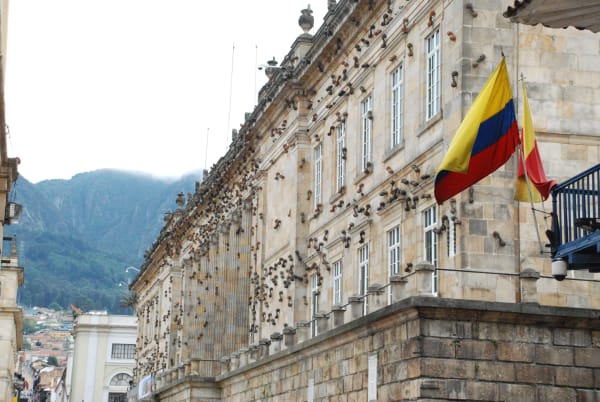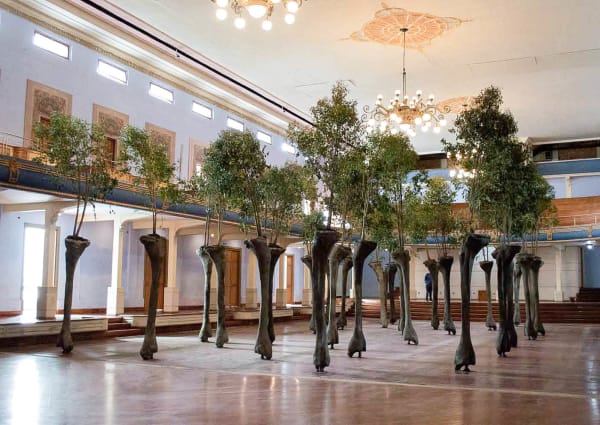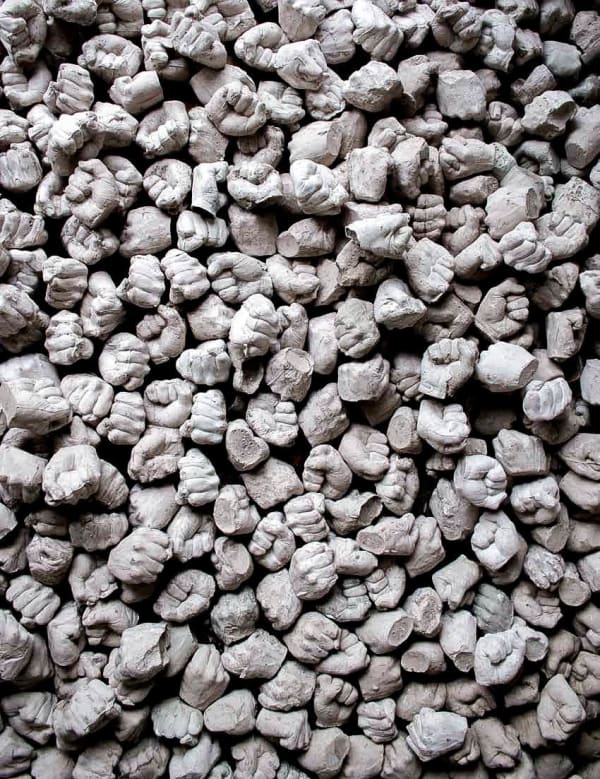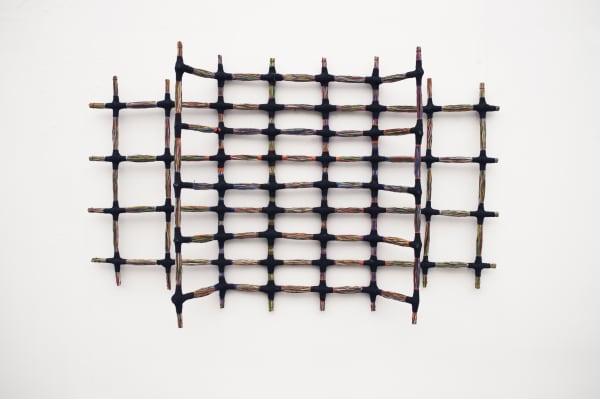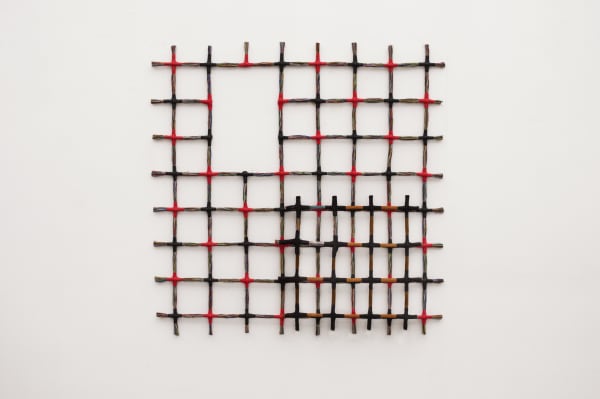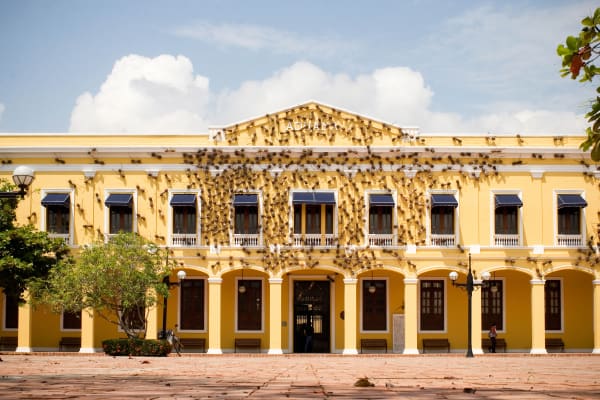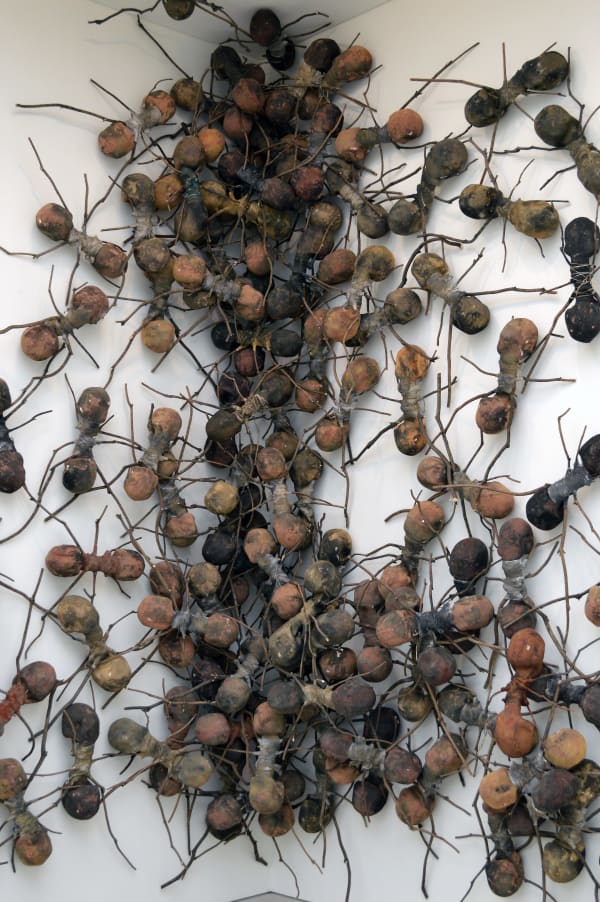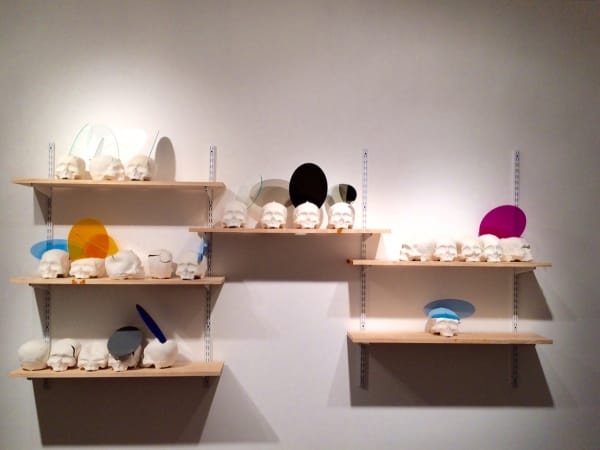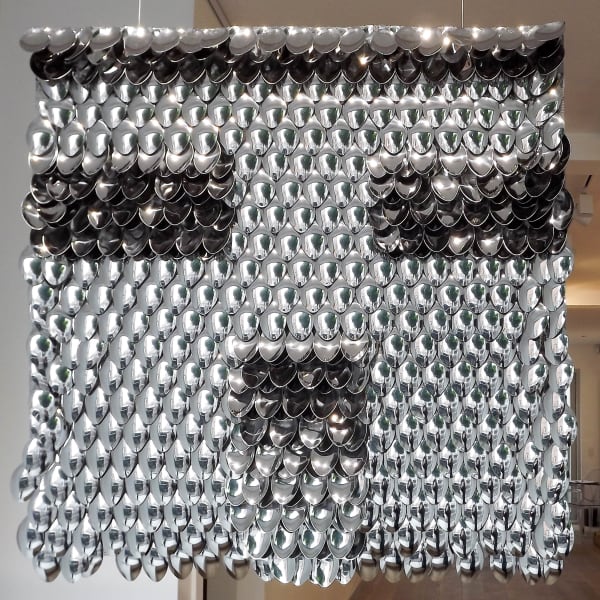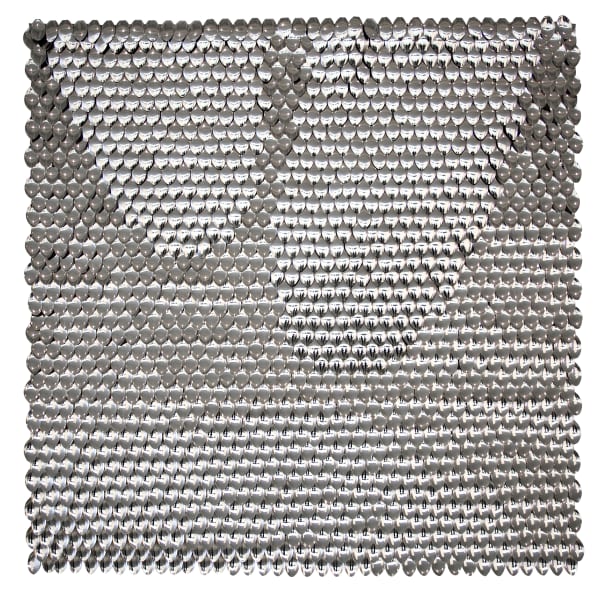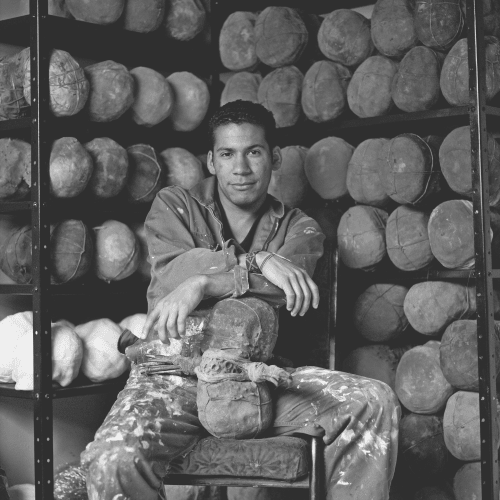Rafael Gomez Barros
The fragility of the human condition and the inevitability of death find a mutual ubiquity in Gomez Barros' work, often informing each other, building narratives in tandem
Raised in Bogota, Colombia and Rafael Gomez Barros studied Fine Arts at The Jorge
Tadeo Lozano University. Many of his works address the human condition bringing into focus the history of violence in Colombia - denouncing the political situation infected by this history. His works also examine the frailty of distinction between accepted binaries; exposing the true minutia of the space between the individual and the social, desire and reality and identity and anonymity. His works are heavily cerebral, making use of repetition and manipulated forms to draw upon the rhizomatic nature of the mental space, where images are multiplied and distorted by our pasts. These very same works however are distinctly physical; firmly planting themselves in real space - and at times, taking it over for themselves - continuing Gomez Barros' pattern of disrupting and displacing binary categorization.
Rafael Gomez Barros was raised in Bogota, Colombia and studied Fine Arts at The Jorge
Tadeo Lozano University. His projects address the human condition and denounce the political situation and history of repeated violence in Columbia. They highlight the contrast between the individual and the social, desire and reality and identity and anonymity.
His early works such as Even the Soil is Half Breed (1999) and Urns (2000), reflect the loss
of identity consequent to the violence and suppression of freedom in Columbia. They picture face-like forms with missing features, stitched mouths or skin, which denotes a forced silence, concealment or reconstructed identities. These identical forms, drawn repeatedly in a form of ritual, at once represent the mental space where memories, values, conflicts, traditions and barriers live but also evoke pre-Colombian funeral vessels. Gomez Barros is reminding us of the most respect-inspiring of rites: death.
The fragility of the human condition and the inevitability of death is a reoccurring theme in his work.
We Are 井 (2013-2018) is an installation formed of a field of thirty trees placed onto fiberglass sculptures of tibia bones. The whole represents the thirty burial pits that have been found throughout the country. These ‘fosas comunes’ were a systematic practice used commonly throughout Columbia’s history of violence. Such an artistic process manifests a need for remembrance, rescuing from oblivion the anonymous lives violently silenced into these pits. Living Dead (2014) very visually portrays the spirits of kidnapped and trapped political fugitives. Cubes of concrete were placed onto tree trunks, weighing them down so that some collapse. The contrast between the living bark and the white concrete defines the ambiguity of all resistance.
While certain pieces show the violence of Columbian history and the constant looming
threat of death, works such as The Speciality of The House, where spoons are used to create a sculptural installation, talk about another kind of fragility: that of repeated consumption, self-satisfaction and fleeting pleasures that cause us to loose ourselves. The set of sculptures named Patronus (2015) also refer to human conditioning. They are a metaphor of the way in which humans are trapped in a spell of patterns. Black skulls are compressed or slit by circular pieces of glass. With this installation, Gomez Barros shows that human behaviour is acquired through social transmission yet that any pattern or role model should be considered as relative since they depend on different contexts. This is perhaps why the pieces of glass are angled into the skulls in various ways, colours and shapes. His most recognized work so far has been a project of urban intervention called House Taken (2008-2018) where ant sculptures made from the cast of two human skulls have been placed on the facades of architectural structures such as that of the Colombian National Congress. This invasive project puts into discussion the notions of diaspora, forced displacement and uprooting caused by globalization and warns of the impact of these dynamics on human life. His latest project, Strength (2018) brings together over 70 tons of cement fists that represent unity in persistence. This work sends the message that it is not possible to speak of final defeats when there is united human persistence. This social and interactive sculpture’s aim is to grow larger and larger as viewers include a copy of their own fists to the exhibition.

